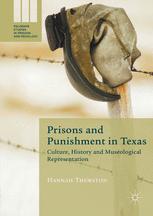

Most ebook files are in PDF format, so you can easily read them using various software such as Foxit Reader or directly on the Google Chrome browser.
Some ebook files are released by publishers in other formats such as .awz, .mobi, .epub, .fb2, etc. You may need to install specific software to read these formats on mobile/PC, such as Calibre.
Please read the tutorial at this link: https://ebookbell.com/faq
We offer FREE conversion to the popular formats you request; however, this may take some time. Therefore, right after payment, please email us, and we will try to provide the service as quickly as possible.
For some exceptional file formats or broken links (if any), please refrain from opening any disputes. Instead, email us first, and we will try to assist within a maximum of 6 hours.
EbookBell Team

4.0
16 reviewsThis book explores the identity of Texas as a state with a large and severe penal system. It does so by assessing the narratives at work in Texas museums and tourist sites associated with prisons and punishment. In such cultural institutions, complex narratives are presented, which show celebratory stories of Texan toughness in the penal sphere, as well as poignant stories about the witnessing of executions, comical stories that normalize the harsher aspects of Texan punishment, and presentations about prison officers who have lost their lives in the war on crime. In analysing these representations, the book shows that Texan history plays an important role in the production of Texan self-identity, and that to understand the Texan commitment to harsh punishment we must be prepared to focus on Texan myths and memories.
Prisons and Punishment in Texas draws on diverse interdisciplinary work, including criminology, cultural studies about Southern values, as well as research on cultural memory and dark tourism. Museums are shown to be under-researched sites of criminological significance, which offer rich evidence through which penal imaginaries and the cultural role of punishment can be explored. The book will be of great interest to criminologists as well as scholars of sociology, cultural studies, museum studies and politics.